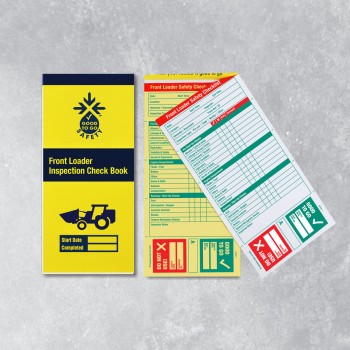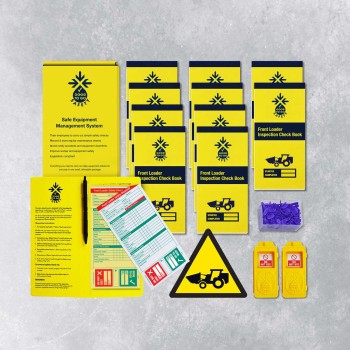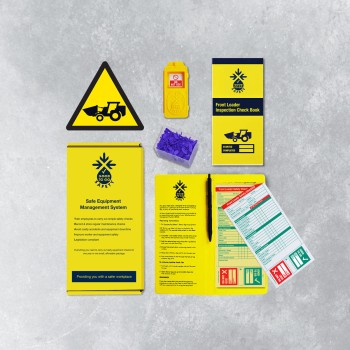A global glass bottle manufacturer has been fined £600,000 after a worker suffered burns when molten glass and hot water spilled into his cab.
O-I Glass Limited pleaded guilty to a single health and safety charge following the incident at its Glasshouse Loan site in Alloa on 3 February 2024.
The 32-year-old employee sustained scald burns covering eight percent of his body but has since made a full recovery.
The company employs around 500 people at the Alloa site, which operates continuously to produce glass bottles. Furnaces used to smelt raw materials are located above two glass reject basements containing large, moveable skips. These skips collect molten or formed glass rejected during the manufacturing process via chutes, down which coolant water also flows. This combination generates extremely hot water and large amounts of steam.
Because production is ongoing, the skips fill quickly, often causing molten material and hot water to spill onto the basement floors. Employees working below use shovel loaders to clear the spilled material and deposit it into other skips.
On the day of the incident, the injured worker was operating a shovel loader to remove waste molten glass and water from the basement floor. However, the cab of the vehicle was missing its protective door, allowing hot material to spill from the bucket and onto him.
An investigation by the Health and Safety Executive (HSE) revealed that the shovel loader had originally been fitted with a protective door and glass window. The door was removed in March 2022 after being damaged and was never replaced, despite the issue being reported to the site engineer. In the two years leading up to the incident, other operators had also reported being struck by molten glass or having their footwear burnt inside the cab.
HSE guidance, specifically the publication “A guide to workplace transport safety – HSE (HSG136) paragraph 219 & 220: states that ‘vehicles should be fitted with additional protection for those working ….in an inhospitable working environment…. where there is a risk of being struck by falling objects, the vehicle should be fitted with a falling-object protective structure (FOPS)’ and Safe use of work equipment – HSE (Approved Code of Practice to the Provision and Use of Work Equipment Regulations 1998 (PUWER))
Following the incident, the company removed the vehicle from service, and it didn’t return until June 2024, after being fitted with a steel front door, incorporating a glass window with protective wire mesh.
O-I Glass Limited, of Edinburgh Way, Harlow, Essex, pleaded guilty to Regulation 5 (1) of The Provision and Use of Work Equipment Regulations 1998 and section 33(1) of Health and Safety at Work etc Act 1974 for failing to maintain the vehicle in an efficient state, in efficient working order and in good repair. The company was fined £600,000 at Stirling Sheriff Court on 23 September 2025.
HSE inspector Kathy Gostick said: “This was an avoidable ordeal for a young worker. It is sheer luck he has been able to recover from his serious injuries.
“This company’s employees worked in this environment with a safety critical part of the loader missing for a period of almost two years.
“Although the protective front door had been removed and reported to the on-site engineer, drivers had continued to work and operate the loader with it missing.
“Some operatives even described being struck or having footwear burnt by molten glass falling into the cab as a result.
“When work equipment is being selected, its suitability for the environment it is going to be used in must be risk assessed. In this case the protective door was not suitable to protect against impacts from hot and molten glass and therefore was often broken and in the end never replaced. Had an appropriate door been selected and maintained in place this accident would not have occurred.”
Ensuring that all work equipment is properly maintained and safe for use is a fundamental aspect of workplace health and safety. When machinery or vehicles are supplied with protective components—such as guards, shields, or doors—these are not optional accessories, but vital safety features designed to protect operators from serious harm. The absence of even a single protective element can expose workers to significant risks, as it compromises the integrity of the machine’s safety design.
In this case, the shovel loader had originally been fitted with a protective door and glass window to shield the operator from hazards such as molten glass, debris, and heat. Once the door was removed due to damage, the loader was no longer safe to use. Continuing to operate the vehicle without its protective guard created an ongoing and foreseeable danger, one that ultimately resulted in a preventable injury. This highlights the critical need for equipment to be restored to its original safe condition before being returned to service.
Regular inspections and prompt maintenance play a vital role in identifying and correcting such safety deficiencies. Employers have a duty to ensure that damaged or missing parts are repaired or replaced immediately, and that no equipment is used unless it meets the manufacturer’s safety standards. A robust system for reporting faults and following up on corrective actions helps prevent lapses in safety management that can lead to incidents like this one.
Ultimately, maintaining equipment in a safe and serviceable condition protects not only workers, but also the organisation itself. Failing to address known issues can lead to severe consequences, including injuries, operational disruption, financial penalties, and reputational damage. By prioritising equipment safety, employers demonstrate a commitment to compliance, care, and the wellbeing of everyone on site.
It's crazy how often we read cases like this. It's one of the reasons we created the TakeAIM app - to help companies complete and record regular/daily inspections and to keep on top of their maintenance procedures. Of course spotting a fault is one thing but if the door had been missing for 2 years then they already knew about it but decided to ignore it which may explain the hefty fine. Good preventative maintenance procedures can actually save money by improving efficiencies, reducing downtime etc rather than costing money. Considering you can complete 250 checks for £75 on our app (a year of daily checks on a 5-day working week) it certainly works out an awful lot cheaper than paying a £600k fine (but only if you rectify the issue once it is spotted). Even that though can save money - by spotting a minor fault early it means the repairs can be scheduled at a convenient time before it develops into something more costly over time. False economies by short sighted management unfortunately? Feel free to take a look at our app in case it is of interest: takeaim.goodtogosafety.co.uk









